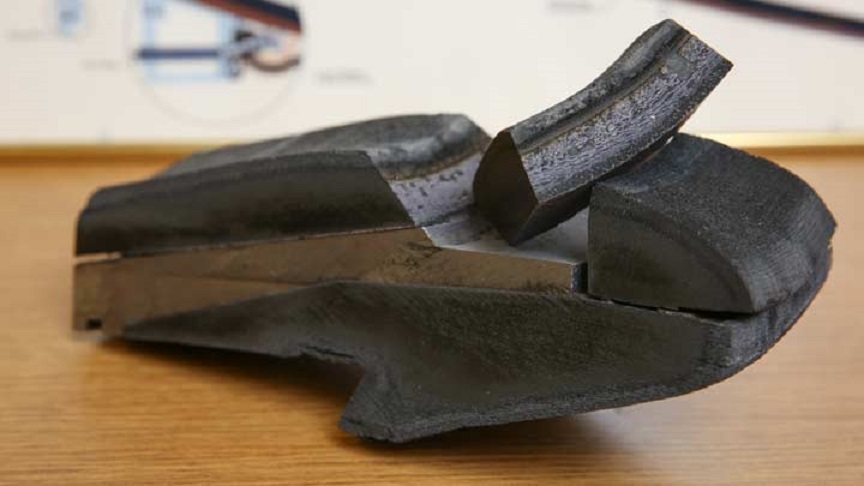
A new, green process developed by a University of Alabama in Huntsville (UAH) professor for producing the carbon fiber that forms ablative rocket nozzles and heat shields has been awarded a patent.
‘This is a green process, so it is environmentally clean,’ said Dr William Kaukler, an associate research professor at UAH’s Rotorcraft Systems Engineering and Simulation Center and a NASA contractor for 35 years. ‘We recycle all the byproducts.’
Dr Kaukler developed the new ionic process at UAH’s Reliability and Failure Analysis Laboratory with funding from the U.S. Army’s Aviation and Missile Research, Development and Engineering Center (AMRDEC).
‘Other people know about using ionic processes to make fibers but they are not making carbon fibers with them,’ Dr Kaukler said.
To form a solid fuel rocket nozzle, layers of carbon fiber fabric made from carbonized rayon are coated with pitch and wound around a mandrel, and then heat-treated to convert the pitch to solid carbon. The resulting nozzle will be a carbon fiber reinforced-carbon composite. A single large solid rocket motor like that used for shuttle boosters can use up to 35 tons of fiber. The rocket nozzles of Army missiles are made from phenolic resin and this same carbon fiber.
Structural applications
‘This carbon fiber is not the same fiber that you’d go out and make aircraft or car parts from,’ said Dr Kaukler. ‘This is the only way to make the carbon fiber that is suitable for rocket nozzles, is to start with cellulosic fiber.’ The more common carbon fiber used in structural applications is made from polyacrylonitrile (PAN) and, while stronger, its thermal conductivity is too high.
‘That’s why you have to make the fiber out of cellulose, because it has the lowest rate of thermal conductivity of any fiber,’ Dr Kaukler suggested. The low conductivity keeps the propellant’s heat in for more propulsion efficiency and it prevents the nozzle from burning away too quickly in flight, with disastrous consequences.
‘Scaling up the process to manufacturing dimensions could aid NASA as it moves forward with solid rocket motors in its next-generation Space Launch System, and it could prove useful for heat shields used in re-entry to Earth’s atmosphere or on planetary probes designed for landing, he added.
This story is reprinted from material from the University of Alabama in Huntsville, with editorial changes made by Materials Today. The views expressed in this article do not necessarily represent those of Elsevier.





